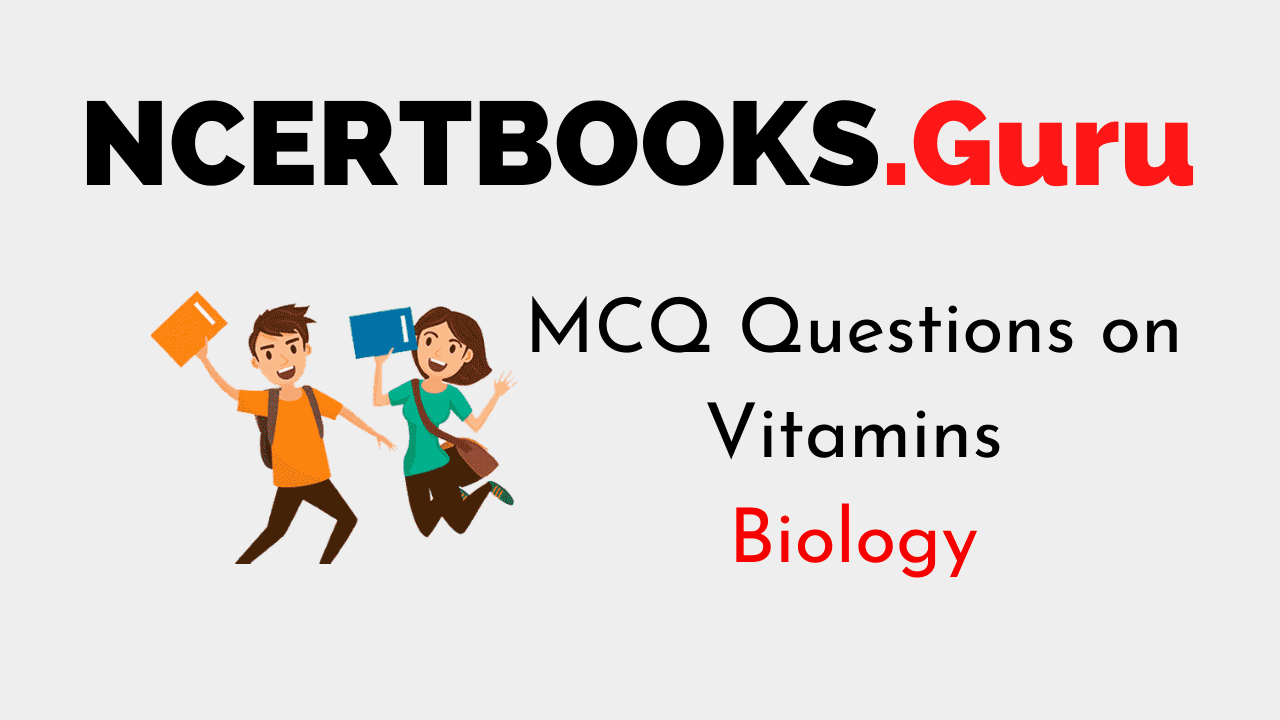Biology is the study of life. Below, You will find a list of Biology MCQ Questions as per the latest prescribed syllabus. Ace up your preparation with the Objective Questions available on Vitamins and enhance your subject knowledge. Understand the concept clearly by consistently practicing the Multiple Choice Questions and score well in your exams.
MCQ Questions on Vitamins
1. The cause of short-term or acute vitamin A poisoning is due to
(a) Eating the liver of Mule deer
(b) Eating the liver of Buffalo
(c) Eating the liver of Ostrich
(d)Eating the liver of Polar bear
Answer
Answer: (d) Eating the liver of Polar bear.
2. Which of the following is the most essential nutrient for a woman during her initial stages of pregnancy to prevent birth defects?
(a) Thiamin
(b) Folic acid
(c) Vitamin C
(d) Vitamin E
Answer
Answer: (b) Folic acid.
3. Which of the following food sources has the highest levels of vitamin C?
(a) Parsley
(b) Broccoli
(c) Black currants
(d) Orange juice
Answer
Answer: (c) Black currants.
4. Which of the following vitamin helps in blood clotting?
(a) Vitamin A
(b) Vitamin C
(c) Vitamin D
(d) Vitamin K
Answer
Answer: (d) Vitamin K.
5. Which is the leading cause of blindness in children worldwide?
(a) Glaucoma
(b) Cataracts
(c) Colour blindness
(d) Vitamin A deficiency
Answer
Answer: (d) Vitamin A deficiency.
6. Which of the following vitamin deficiency causes Beriberi?
(a) Vitamin B1
(b) Vitamin B2
(c) Vitamin B6
(d) Vitamin B12
Answer
Answer: (a) Vitamin B1.
7. Who is most likely to develop scurvy – A vitamin C deficiency?
(a) A pregnant woman
(b) A malnourished child
(c) A long-time alcoholic
(d) A person with the eating disorder anorexia nervosa
Answer
Answer: (c) A long-time alcoholic.
8. Which of the following vitamin functions as both, hormone and visual pigment?
(a) Thiamine
(b) Retinal
(c) Riboflavin
(d) Folic acid
Answer
Answer: (b) Retinal.
9. Which of the following nutrient deficiency causes megaloblastic anaemia?
(a) Folic acid
(b) Niacin
(c) Pyridoxine
(d) Cobalamin
Answer
Answer: (a) Folic acid.
10. Which of the following is a fat-soluble vitamin?
(a) Vitamin B
(b) Vitamin C
(c) Vitamin B12
(d) Vitamin K
Answer
Answer: (d) Vitamin K.
11. Which of the following diseases is caused by the deficiency of Niacin?
(a) Scurvy
(b) Rickets
(c) Pellagra
(d) Pernicious anaemia
Answer
Answer: (c) Pellagra.
12. Which of the following vitamins serves as a hormone precursor?
(a) Vitamin A
(b) Vitamin C
(c) Vitamin D
(d) Vitamin K
Answer
Answer: (c) Vitamin D.
13. Which of the following is a component of the coenzyme A?
(a) Retinol
(b) Pyridoxine
(c) Retinoic acid
(d) Pantothenic acid
Answer
Answer: (d) Pantothenic acid.
14. Which of the following vitamins is also known as cobalamin?
(a) Vitamin B11
(b) Vitamin B2
(c) Vitamin B6
(d) Vitamin B12
Answer
Answer: (d) Vitamin B12.
15. Which of the following statements is false about Ascorbic acid?
(a) It shows antioxidant activity
(b) It is a strong reducing agent
(c) It can be synthesized in the body
(d) Involved in the hydroxylation of prolyl- and lysyl- residues of collagen
Answer
Answer: (c) It can be synthesized in the body.
16. Which of the following vitamins has a coenzyme function?
(a) Vitamin A
(b) Vitamin C
(c) Vitamin B
(d) All of the above
Answer
Answer: (d) All of the above.
17. Which of the following food source are the best sources of vitamin A?
(a) Sweet potato
(b) Poultry
(c) Legumes
(d) Dairy products
Answer
Answer: (a) Sweet potato.
18. Which of the following is a water-soluble vitamin?
(a) Vitamin B1
(b) Vitamin C
(c) Vitamin B2
(d) All of the above
Answer
Answer: (d) All of the above.
19. Weakness in muscles and increase in the fragility of red blood cells is caused due to the __________.
(a) Deficiency of vitamin E
(b) Deficiency of vitamin D
(c) Deficiency of vitamin C
(d) Deficiency of vitamin A
Answer
Answer: (a) Deficiency of vitamin E.
20. Which of the following is the scientific name of Vitamin K?
(a) Ascorbic acid
(b) Phytonadione
(c) Tocopherol
(d) Pantothenic Acid
Answer
Answer: (b) Phytonadione.
